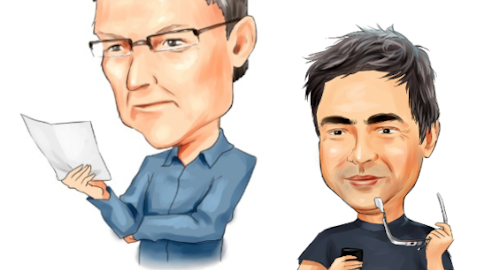On this day in economic and business history…
Steve Jobs’ relationship with Apple Inc. (NASDAQ:AAPL) has been a subject explored by many writers and several different films. That relationship is best summed up by two events occurring on Sept. 16. After losing a bitter boardroom battle with his hand-picked CEO, Jobs departed the Mac-maker on Sept. 16, 1985. Exactly 12 years later, on Sept. 16, 1997, a board of rather different opinion appointed Jobs the interim CEO, or iCEO, of an Apple struggling to find its way.

Source: User thetaxhaven via Flickr.
The story of Jobs’ ouster is closely tied to the success of the ambitious Macintosh, which Jobs had poured his energies into after his previous project, the Lisa, failed to attract much interest. Gizmodo covers the events leading up to the Mac’s launch, as well as its fallout:
With his Macintosh team, Jobs set out to create a machine that would be a triumph not only for the company, but for himself, too. He instilled in his team a sense of creativity and rebellion — it’s said that he hung a pirate flag in their office (which was in a separate building from the rest of the company) and explained that it was better to be a pirate than to join the Navy. He grew increasingly antagonistic toward Apple Inc. (NASDAQ:AAPL)’s other groups, contributing to the fissure that would eventually lead to him leaving the company.
The famous 1984 Super Bowl commercial whipped up much anticipation for the Mac, and while it was generally well-received, sales quickly cooled. Jobs began openly clashing with John Sculley, the CEO Jobs himself had lured away from Pepsi just a few years earlier, and in May Sculley stripped Jobs of his managerial duties, giving him a position as Chairman. Jobs spent four months trying to figure out his next move, and on September 16, 1985, he resigned from Apple Inc. (NASDAQ:AAPL) Computer.
Sculley claimed much later that his relationship with Jobs only began to break down once the flaws in their business began to show as a result of weak Mac sales. Jobs had actually pushed for Macs to be sold at a lower price point, which would undoubtedly have goosed sales of the costly machine, but the pressures of reporting quarterly earnings to shareholders kept Sculley focused on the Apple II, which was still not selling in enough volume to justify a Mac price cut. This goes a long way toward explaining Jobs’ later contempt for the demands of Apple Inc. (NASDAQ:AAPL)’s shareholders. Sculley also told Newsweek many years later that “it probably would never have broken down between Steve and me if we had figured out different roles… Maybe he should have been the CEO and I should have been the president.”
The inter-Jobs era at Apple Inc. (NASDAQ:AAPL) was a decidedly mixed bag. The Mac eventually supplanted the Apple II as the company’s flagship machine, but it never came close to reclaiming a leading position in the Microsoft Corporation (NASDAQ:MSFT)-led PC industry. Apple did help push laptops forward with its PowerBook lineup, but Sculley’s effort to produce the first true tablet became a financial disaster.
Sculley left the company in 1993, and Apple’s shares began to slide around the same time. Investors who’d bought into Apple on the day of Jobs’ resignation had seen gains as great as 800% by the early ’90s. However, most of those gains evaporated after 1993 as the company’s profitability became increasingly uncertain. By 1996, as revenue took a nosedive and Apple swung to a loss for the first time as a public company, it became apparent that CEO Michael Spindler’s strategy was failing. Microsoft Corporation (NASDAQ:MSFT) had only recently launched Windows 95, but the new operating system was already taking the world by storm. A major misstep might have ended Apple entirely.
Gil Amelio replaced Spindler as CEO in early 1996 and immediately began to look for a next-generation operating system that might save the company from complete irrelevance. The result of that search was Jobs’ return to Apple, engineered via Apple’s acquisition of NeXT. Apple continued to slide through 1997, and Jobs finally found a way to win its board to his side in the summer, when he engineered a coup to bounce Amelio from the corner office.
By the eve of Jobs’ iconic 1997 Macworld speech, the company’s shares had given up most of the gains of the past decade. Microsoft had gone public several months after Jobs’ 1985 departure, but during the time that both companies had been publicly traded, the Mac-maker’s shares had not even doubled, while Microsoft Corporation (NASDAQ:MSFT) had produced a staggering 18,000% return. The market, it seemed, had left Apple for dead, with or without Jobs. But the substance of the Macworld speech — which included the revelations of a new partnership between Apple and Microsoft Corporation (NASDAQ:MSFT) — succeeded in two ways: It calmed investors, who bid shares up 33% after Jobs was done, and it bestowed on Jobs the prestige and vision the board wanted to see from its next leader. A month and a half after delivering the speech, Jobs became interim CEO. His tenure is now widely regarded as the greatest second act in American business history.
The article The Fall and Triumphant Re-Ascent of Steve Jobs originally appeared on Fool.com and is written by Alex Planes.
Fool contributor Alex Planes has no position in any stocks mentioned. The Motley Fool recommends Apple and PepsiCo. The Motley Fool owns shares of Apple, Microsoft, and PepsiCo.
Copyright © 1995 – 2013 The Motley Fool, LLC. All rights reserved. The Motley Fool has a disclosure policy.




